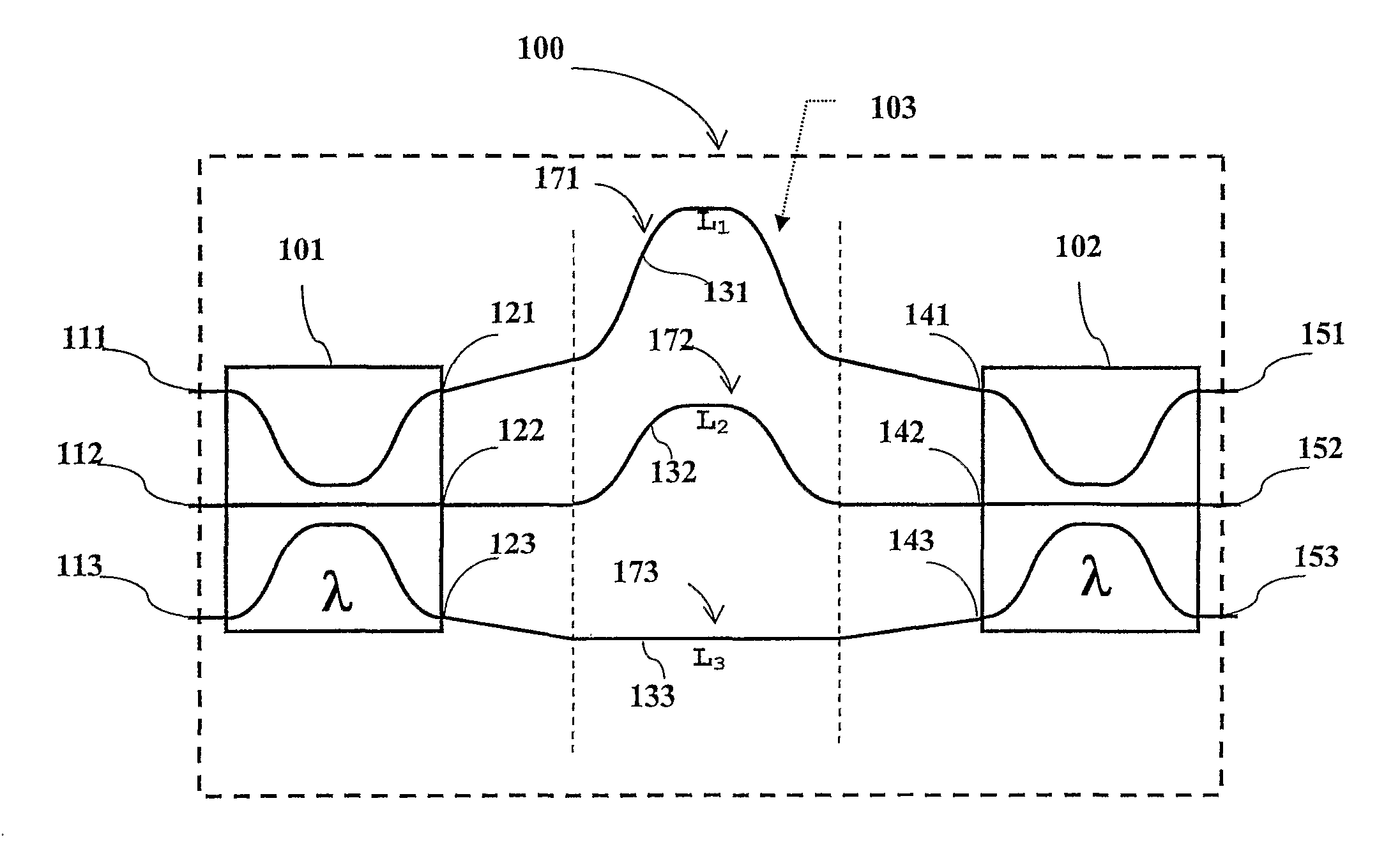Optical band splitter/combiner device comprising a three-arms interferometer
a three-arms, splitter technology, applied in the direction of optical elements, multiplex communication, instruments, etc., can solve the problems of disadvantageous device compactness, high power requirement in the wavelength band of 155010 nm, and the replacement of two 3db directional couplers with two mz interferometers, etc., to achieve strong tolerance to fabrication errors, reduce alignment problems, and increase automation
- Summary
- Abstract
- Description
- Claims
- Application Information
AI Technical Summary
Benefits of technology
Problems solved by technology
Method used
Image
Examples
Embodiment Construction
[0106]FIG. 1 shows an optical device 100 according to the invention for splitting / combining a first and a second optical wavelength band comprising a first and a second optical splitting / combining element 101, 102 optically coupled in cascade and a differential phase delay device 103 optically interposed between them.
[0107]Each of the optical splitting / combining element 101, 102 is of the (25-50-25% λx) / (0-0-100% λy) type and comprises a first, a second and a third optical path, wherein the first optical path is coupled to the second optical path and the second optical path is coupled to the third optical path at a coupling region of the splitting / combining element 101, λx is a wavelength within the first optical band and λy is a wavelength within the second optical band.
[0108]For the purpose of the present invention, ‘optical path’ corresponds, in the more general meaning thereof, to at least one optical mode that may propagate within the optical device.
[0109]Typically, the first, ...
PUM
 Login to View More
Login to View More Abstract
Description
Claims
Application Information
 Login to View More
Login to View More - R&D
- Intellectual Property
- Life Sciences
- Materials
- Tech Scout
- Unparalleled Data Quality
- Higher Quality Content
- 60% Fewer Hallucinations
Browse by: Latest US Patents, China's latest patents, Technical Efficacy Thesaurus, Application Domain, Technology Topic, Popular Technical Reports.
© 2025 PatSnap. All rights reserved.Legal|Privacy policy|Modern Slavery Act Transparency Statement|Sitemap|About US| Contact US: help@patsnap.com



